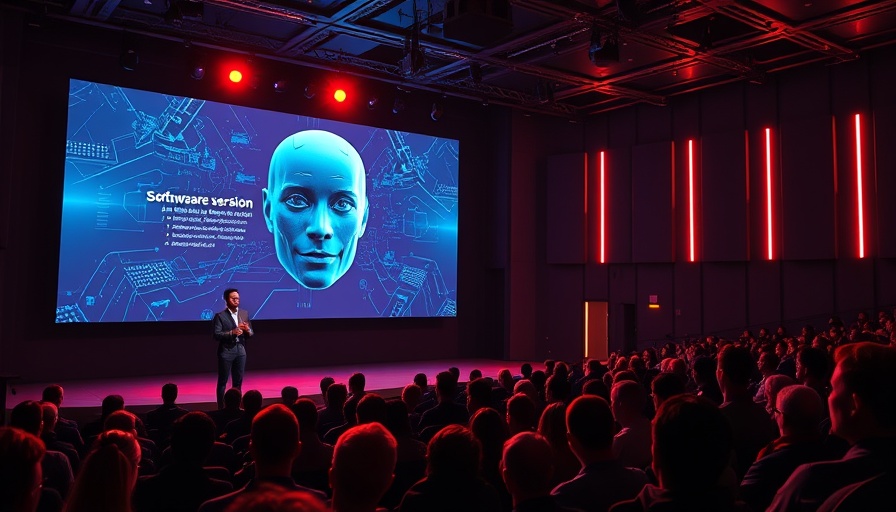
DeepSeek's New AI Model: A Game Changer for Businesses
DeepSeek has made headlines again with the launch of its new AI model, V3 0324, which promises to shake up the artificial intelligence landscape. This latest model not only rivals top Western counterparts but does so with an open-source approach under the MIT license, allowing anyone to leverage its capabilities. The implications of this release extend far beyond software development; they shape the competitive dynamics of the tech industry, especially for business owners looking to enhance their operations with AI technology.
In DeepSeek SHOCKS the West AGAIN! Their New AI Model Is Smarter & Free (V3–0324), the discussion dives into the implications of China's advancements in AI technology, inspiring us to explore its impact on the global market.
The Efficiency Edge: What Makes DeepSeek V3 Different?
One of the stand-out features of the V3 0324 model is its ability to generate text at an impressive rate of approximately 20 tokens per second on high-end hardware, making it approachable for smaller teams and startups. While traditional models require heavy-duty equipment, users can access this top-tier performance on a Mac Studio.
Additionally, DeepSeek utilizes a mixture of experts strategy that only activates a portion of its 671 billion parameters per prompt, optimizing resource use. This means businesses can expect quicker responses and enhanced functionality without needing to invest in expensive server farms. The v3 model's open-source aspect enables businesses to implement it in various applications seamlessly, be it in customer service chatbots or sophisticated data analysis tools.
AI Learnings Fueling the Future of Business
The launch of DeepSeek V3 comes at a crucial time as organizations worldwide scramble to integrate AI into their workflows. As investments in AI marketing software grow, learning and adapting to these new advancements are vital for maintaining a competitive edge. The free access to these powerful tools democratizes innovation, allowing even small companies to harness AI for efficiency and productivity.
Global AI Landscape: The Impact of V3 on Industry Rivalries
DeepSeek’s accelerated advancement has raised concerns in the West about the balance of AI power. The Chinese government has purposely refrained from letting its AI experts participate in international forums due to security fears, reflecting the intense competition for AI supremacy. As DeepSeek powers ahead in China's tech landscape, local markets are seeing a surge in investments focused on AI solutions.
According to reports, municipalities across China are adopting AI technology for public services and healthcare, indicating how seriously the sector is taking this transformation. Companies that fail to adapt may quickly find themselves outpaced by their competitors, making the insights gained from DeepSeek’s innovations critically important.
Unlocking New Opportunities with AI
Business owners need to recognize the value in accessing modern AI solutions like DeepSeek V3 0324 or similar AI marketing software that can bolster marketing efforts and operational efficiencies. The potential applications range from automating repetitive tasks to uncovering deeper insights in customer behavior and data analytics.
With the landscape of AI rapidly evolving, it is essential to gain proficiency in utilizing these new tools to position your business favorably in the market. By acting quickly and effectively, companies can harness AI's growing capabilities to stay ahead.
Key Takeaways
The arrival of DeepSeek V3 0324 signals a new era for AI with far-reaching implications for the competitive landscape. Business owners who embrace AI technology can leverage its advantages to enhance their operations and optimize their strategies. As the market continues to evolve, those who fail to adapt may find themselves at a significant disadvantage.
Consider investing in tailored AI solutions and actively participating in training opportunities to gain insights and skills necessary for navigating this dynamic environment. Don't miss out—GET YOUR OWN AI ASSISTANT today and stay at the forefront of innovation.
 Add Row
Add Row  Add
Add 




Write A Comment